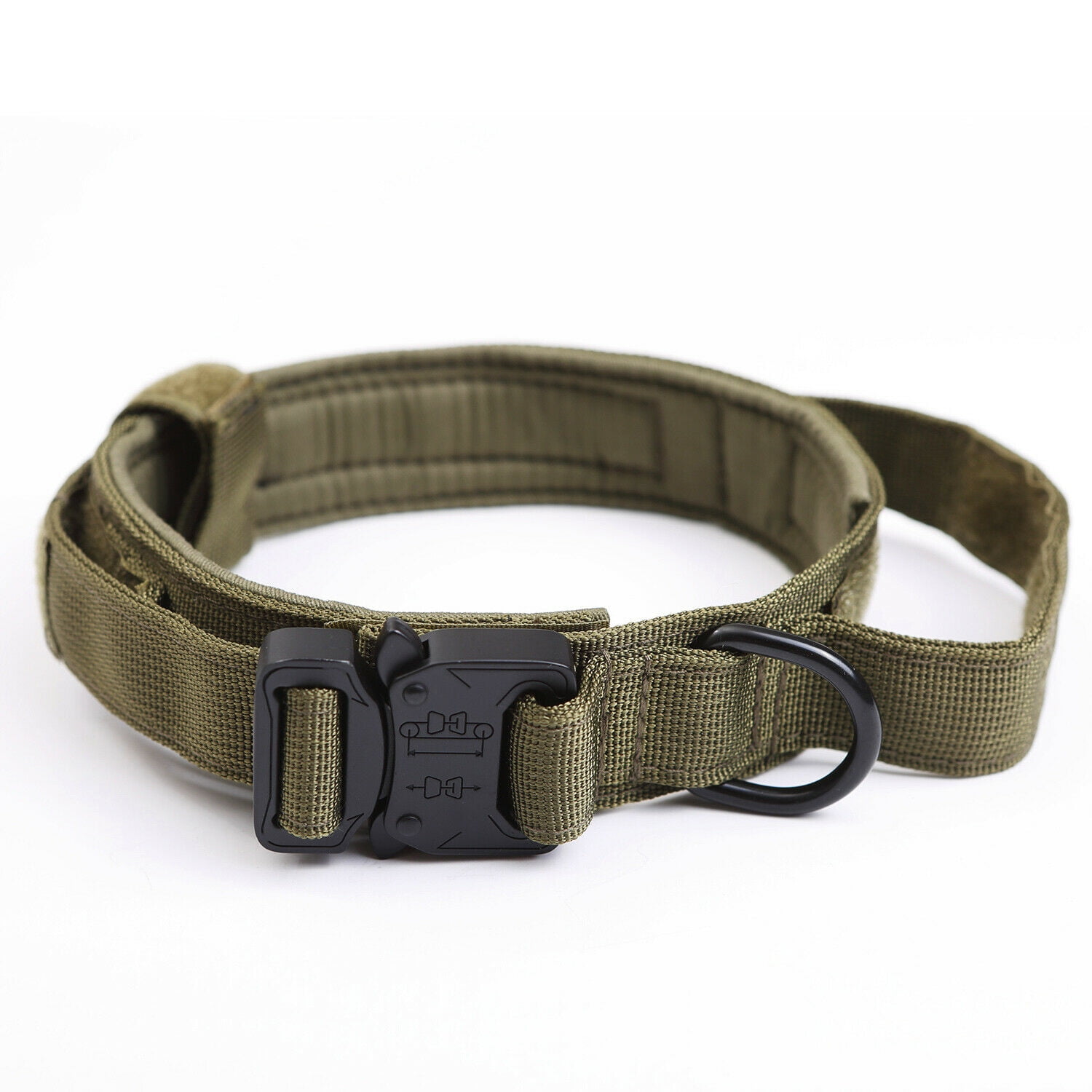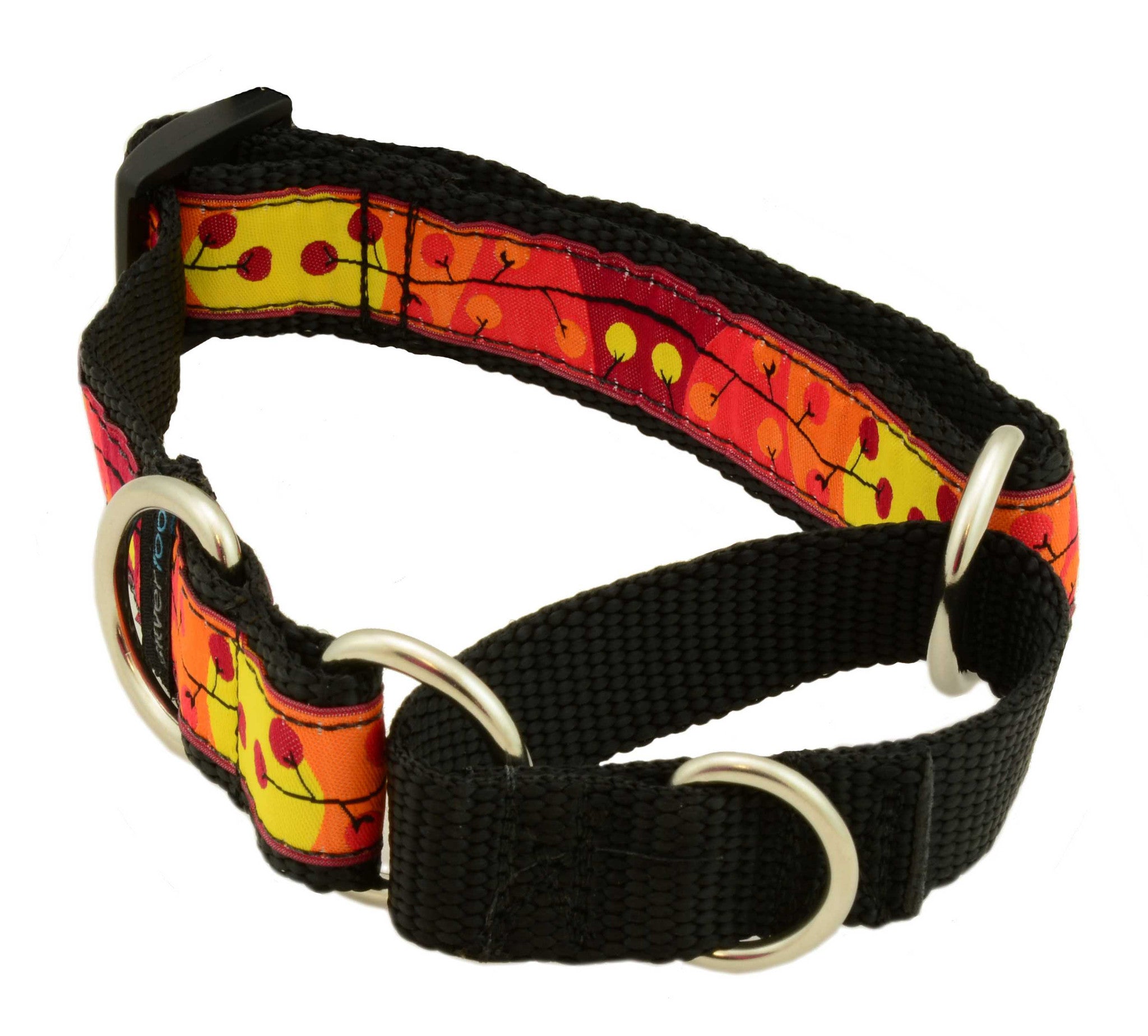
The prongs gently apply pressure around the dog’s neck, providing negative reinforcement when the dog pulls. Herm Sprenger collars are designed with blunt ends that do not cause the dog pain, while the center plate creates symmetry to create the even pressure around the neck. Herm Sprenger prong collars are the highest quality and recommended by every dog trainer I know who uses them.

It’s important to use a high quality prong collar, otherwise a poorly made one will hurt your dog and can puncture their skin. Prong collars only require a small amount of force to communicate the behaviors you want from your dog. Further, it releases quickly once the dog gives into the pressure. Unlike a flat collar, harness, head halter, or even a martingale collar, the prong collar applies even pressure. You can also use them to start the basis of recall.
#DOG TRAINER COLLAR HOW TO#
They are useful tools for teaching dogs how to walk nicely on a leash and to learn basic obedience, like sit, down, and place. Prong collars apply pressure evenly around a dog’s neck to teach them how to turn off pressure, giving them a very clear understanding of unwanted behaviors. That won’t do anything except cause a lot of discomfort and confusion, creating a negative association with the tool.

You don’t just put it on and go for a walk, letting your dog pull and self-correct constantly.

#DOG TRAINER COLLAR PROFESSIONAL#
“The improper use of collars is the number one cause of cervical (neck) subluxations in dogs…The flat collar is the most common type, and can be dangerous if misused…It should not be used for obedience training…a frustrated owner who has difficulty controlling his pet will pull the dog in such a manner as to cause tremendous cervical muscle tightening, thus producing subluxations.” How Does a Prong Collar Work?īefore you go and buy a prong collar and put it on your dog, I urge you to work with a professional dog trainer to learn proper use, technique, and sizing. Daniel Kamen, a veterinary chiropractor states: When used correctly, the prong collar is actually the best tool for protecting a dog’s trachea because it applies an equal amount of pressure around the dog’s neck, compared to a flat collar, or even a martingale, which puts pressure directly on a dog’s throat. This name likely also leads to its bad reputation. Prong collars can also be called “pinch” collars, not because it pinches the dog’s neck, but because you have to pinch the prongs together to open the collar to put it on your dog. Its appearance has led to the common misconception that it is a torture device, however, when used correctly, it is an extremely effective training tool for teaching a dog to understand what is being asked of them.
#DOG TRAINER COLLAR SERIES#
The prong collar has a series of pronged metal links whose open ends lay flat on the dog’s neck. Petite people with very large or strong dogs also find them incredibly helpful. They can be great for behavior modification in reactive dogs to help redirect them from their triggers. What is a Prong Collar?Ī prong collar is a dog training tool used by some dog trainers to teach loose leash walking and basic beginner obedience. This article explains how the prong collar works and how it can help modify your dog’s behavior in a humane and effective manner. The prong collar comes with a lot of pushback from animal rights groups due to the way it looks and the misinformation spread about the tool. Think of the prong collar as the translator.

Remember, dogs don’t speak English and we don’t speak dog. When used correctly, the prong collar is a fantastic tool that helps bridge the communication between a dog and their handler. Prior to using them, I misunderstood how the tools work, due to widespread misinformation about their usage.Īfter talking with many friends, professional trainers, and watching many videos, I decided to give it a try with my dog.Īfter a one-hour training session, I went from dreading walking her to enjoyable, calm walks. Like many, I learned about balanced dog training and the use of aversive tools like the prong collar and e-collar after exhausting the use of positive reinforcement only training with a challenging dog.


 0 kommentar(er)
0 kommentar(er)
